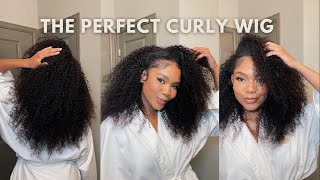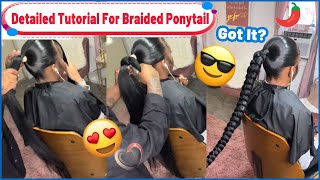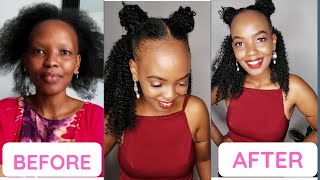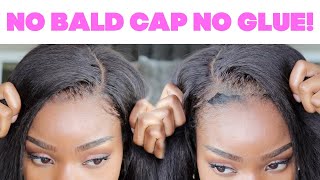Need a Trim? Here are 4 Ways to Trim Your Natural Hair
When it comes to trimming or dusting the ends of your natural hair, things aren’t as complicated as they might seem. The rules for trimming naturally curly and kinky* hair are not too much different from trimming hair that’s straight despite it not all growing in the same direction.
Before you start trimming your natural hair, it’s important to know when it needs to be trimmed. In a previous article, I discussed some tell tale signs of natural hair that’s in need of a trim. The first clue is tangled hair that causes your fingers to get stuck while running your fingers through it. The second clue is see through ends. The third one is frizzy hair that won’t tame. And the fourth clue is an abundance of single strand knots. If you can identify at least one of these, then you are definitely in need of a trim.
Fortunately for you lovely natural ladies, you don’t always need to go to the salon to get a trim. The majority of your trimming can be done in the comfort of your own home.
All you need is a decent pair of shears and patience. Click the tab above or the link in the description to find out how to pick a good pair of hair scissors. In this video we will describe 4 methods of trimming used by various naturalistas that you could use when trimming at home.
When you figure out your best method, you can trim as often as you like, which is not such a bad thing if you like nice blunt ends.
Freshly trimmed ends, will allow your hair to tangle less since you get rid of the pesky little fairy knots or single-strand knots as well as weathered ends. These end up being problematic when out of frustration or impatience, you rip into healthy strands to get through tangles while combing.
Trims also aid in limiting the spread of split ends which tend to climb up the shaft if left unattended for too long. By stopping split ends and limiting tangles you retain length, your hair will look and feel smoother, your styles will set better and may even help you get to your hair goals much faster.
With that said, here are our 4 trimming methods:
1. Twist And Snip

This method of trimming your natural hair might be the easiest. This is how you do it; Twist your hair into small even sections. After all the hair is twisted, grab your shears and snip off any frizzy and tangled ends. Stretch each twist and snip any hairs that are sticking out along the twist. Simple!
2. Stretch And Snip

This method involves trimming your hair after it’s freshly washed and stretched. Stretch and detangle your hair the night before using your best heat free stretching method like banding or African threading. Use a detangle brush to get that blow out look while banding or threading then allow your hair to dry.
When your hair is dry and working in small sections, detangle and pull the hair taut snipping off any uneven or split ends. Just a word of warning, I have used this method in the past and it is easy to cut off more than you need if you do not detangle your hair thoroughly first. If you want to retain length, be very careful with this method.
3. Straighten And Snip

This method of trimming natural hair is not ideal because of the heat application that features greatly in this method. Yet if you happen to be a natural who wears their hair straight often, then this will benefit you.
After straightening your hair section your it off in medium sections with a comb and then smooth the ends of your hair between your fingers. Cut off any broken or see through ends.
I would not advise you to do this too often though to avoid heat damage but again if you wear your hair straight often or your hair has a good tolerance to heat then you will find this method the most useful.
4. Wash And Snip

This is not likely to work for those with super tight curls but if you have a looser curl pattern and long hair then this may be what you’re looking for.
On freshly washed and detangled hair, put all of your hair on top of your head pulling it to the front so that most of your hair is hanging over your forehead.
Proceed to snip the very end of each clumped curl. This is tedious and you need patience for it, but the end results will be gorgeous! You also have the luxury of being very precise with this method of trimming becase you won’t take off more length than is absolutely necessary.
Final thoughts
Keep in mind that your hair grows one fourth of an inch to half an inch per month depending on the person, see how hair growth rates differ in black people. Whether your hair takes a long time to show length or not, you may not need to trim your hair as often as you think so don’t get anxious about it to the point of becoming too scissors happy. If you are just learning your texture give it some time and watch for patterns that will tell you how your hair grows and whether or not it needs a trim.
It is also important to note that the less manipulation you subject your hair to the less you may need to snip. For instance, if you are someone who uses a great deal of heat styling over the course of a couple months then you might require more trims than someone who is into low manipulation styling or protective styling over that same period of time.
I like to trim my hair once or twice per year, depending on it’s condition. However, you can trim your hair more often if that’s what your hair requires.
Making sure that you care for your hair properly between trims is crucial. The goal is to retain length. If you take care of the ends of your hair, you won’t have to remove a great deal of length each time you trim. After all, that would essentially be loping off the progress you have made which is a lesson in being counter productive. Nobody has time for that.




